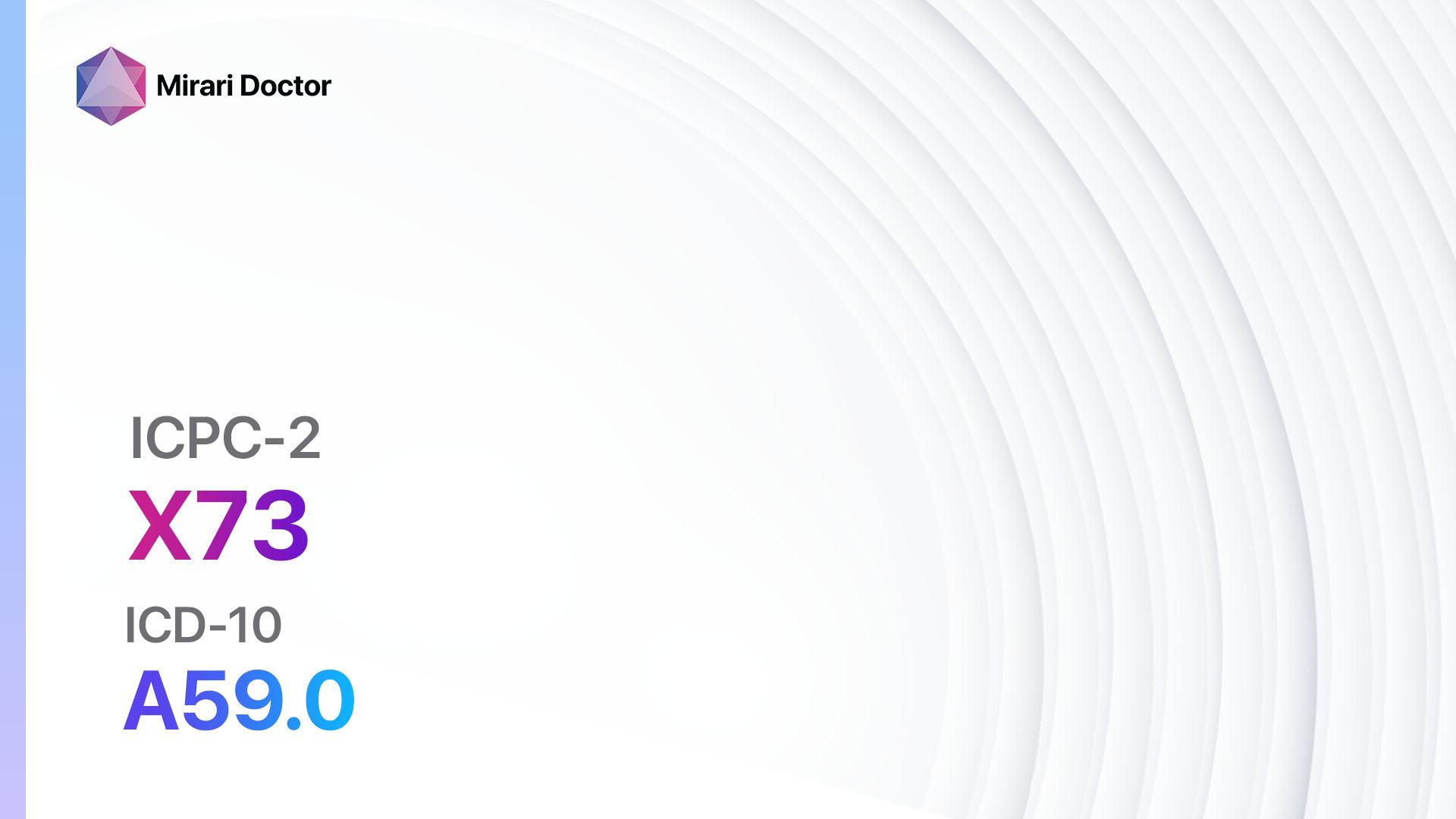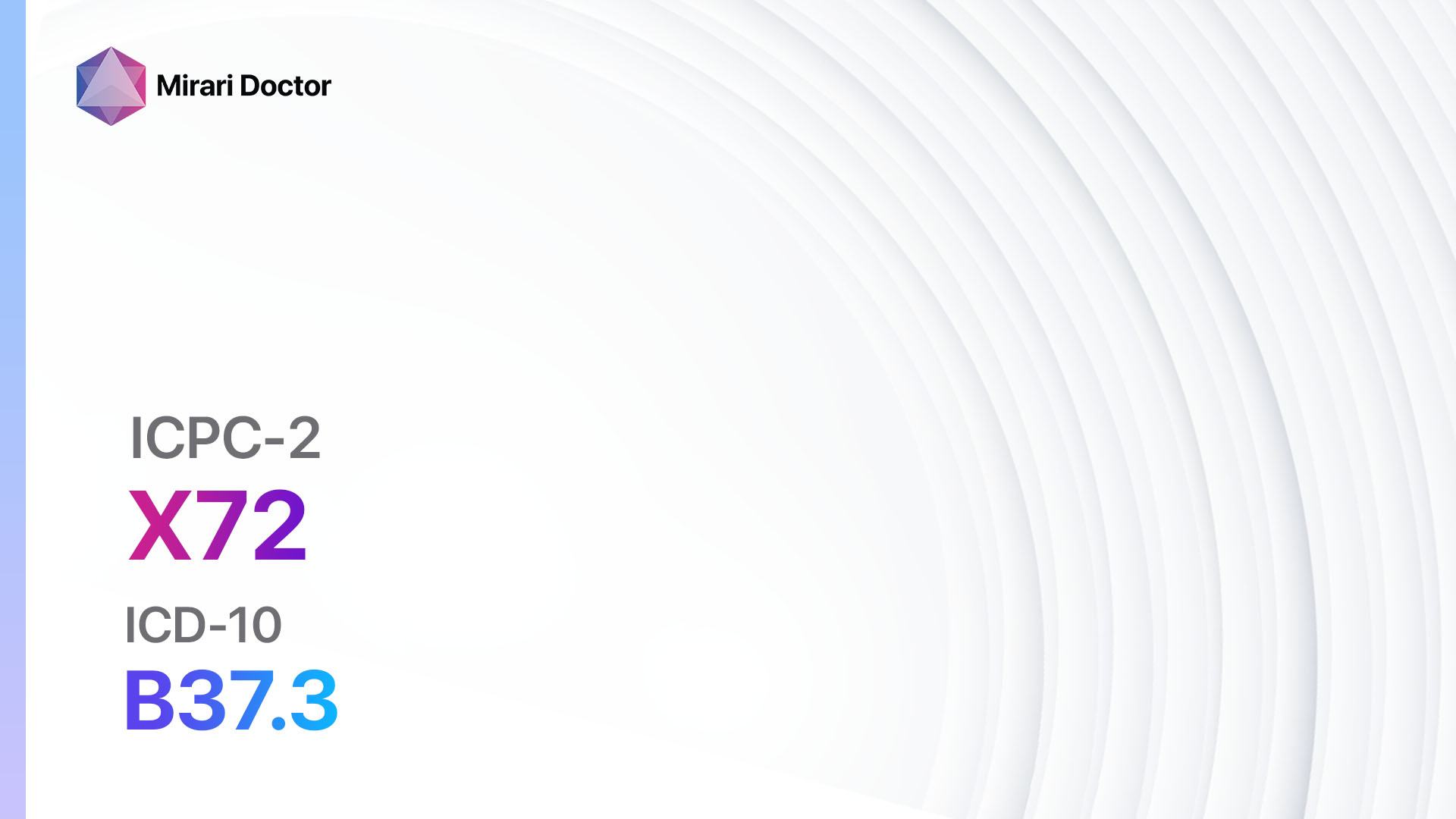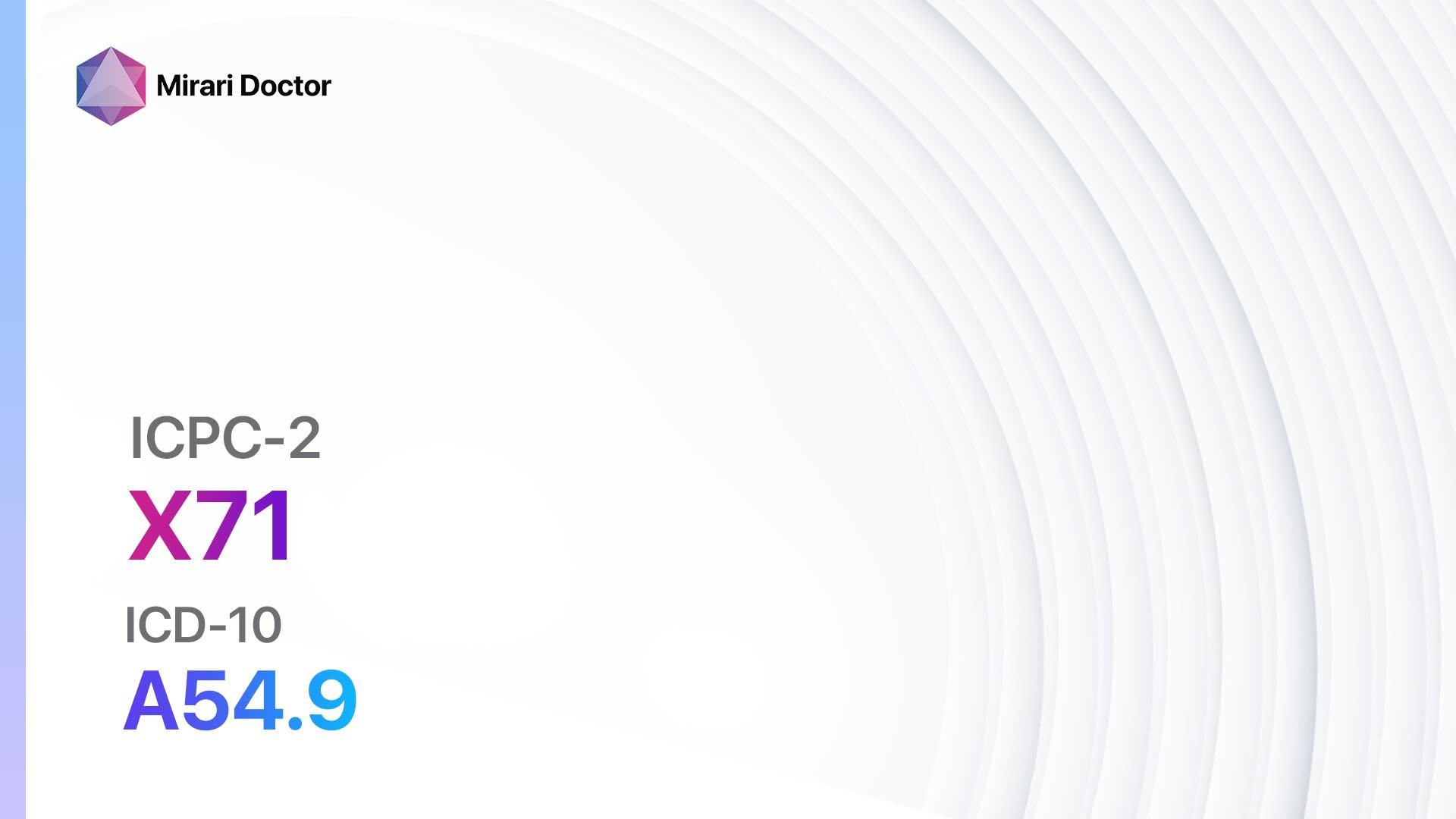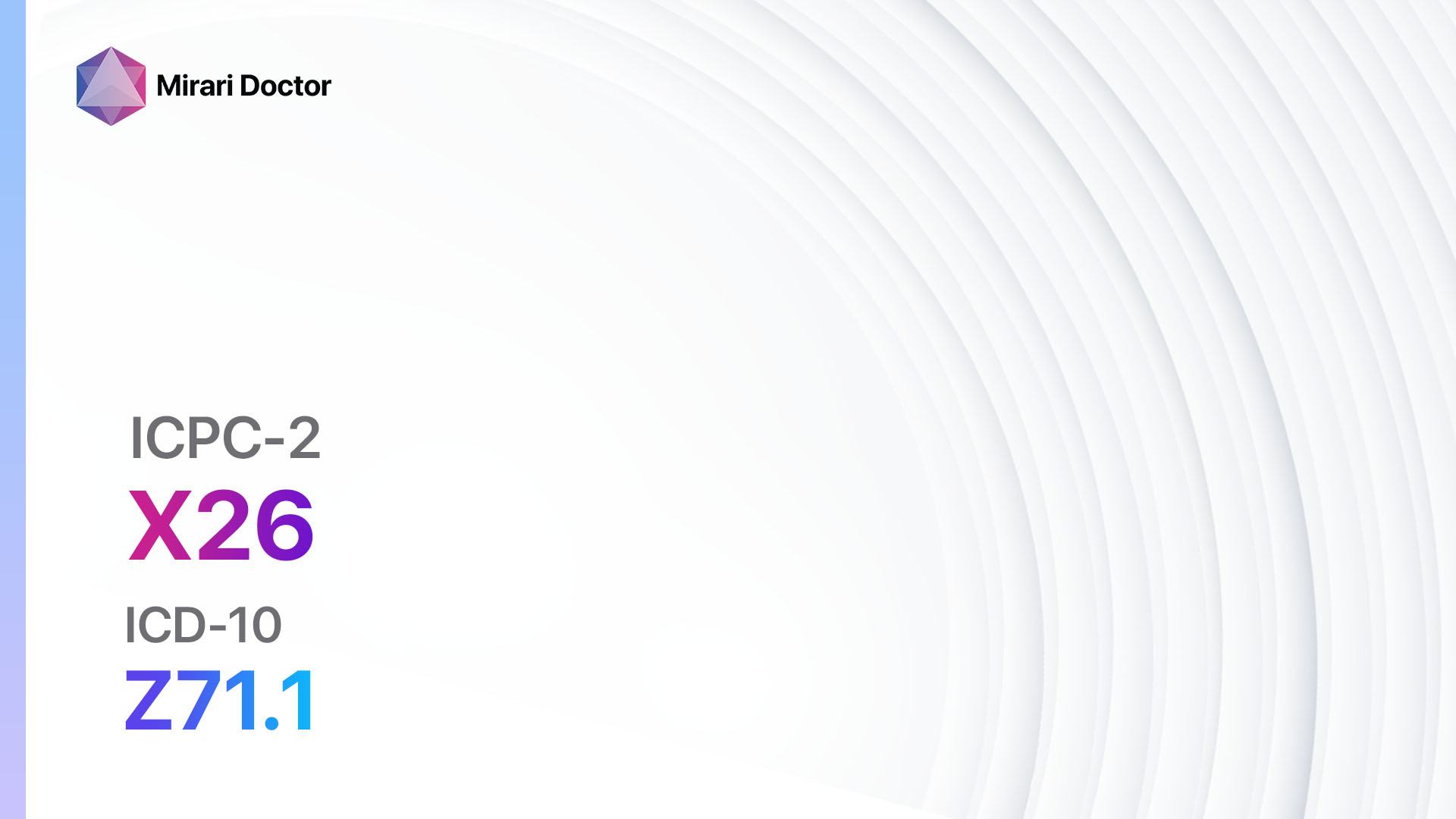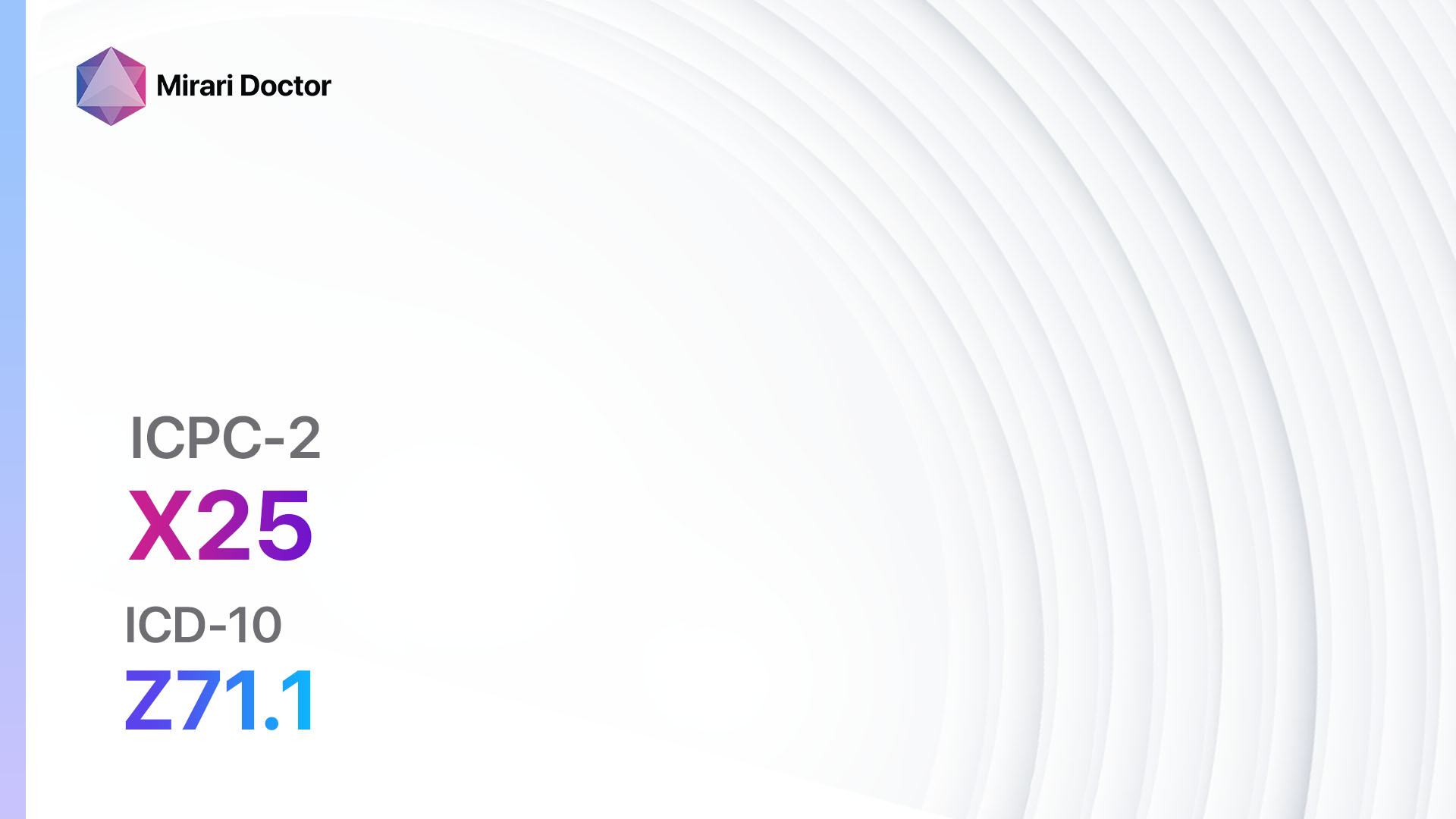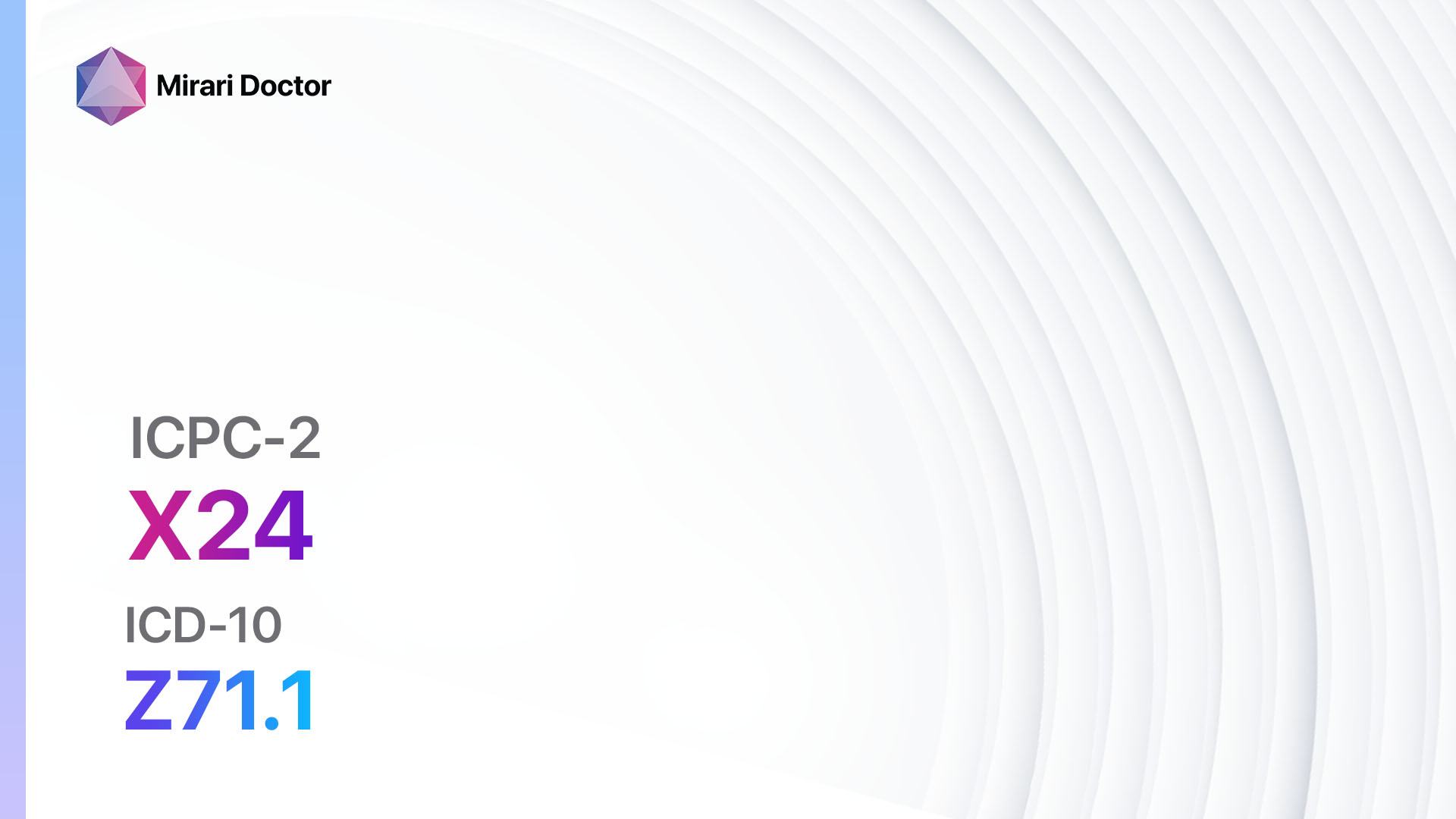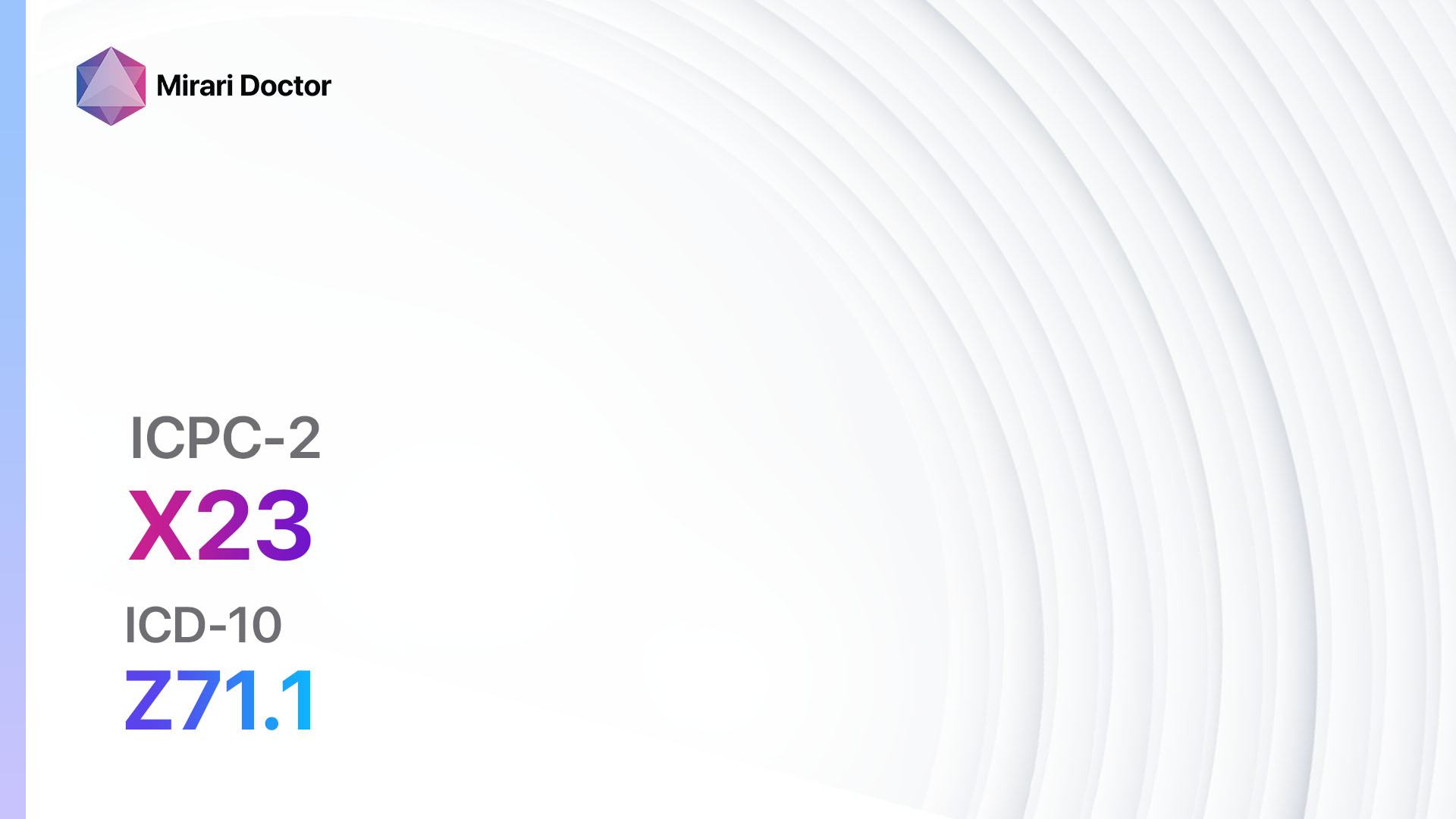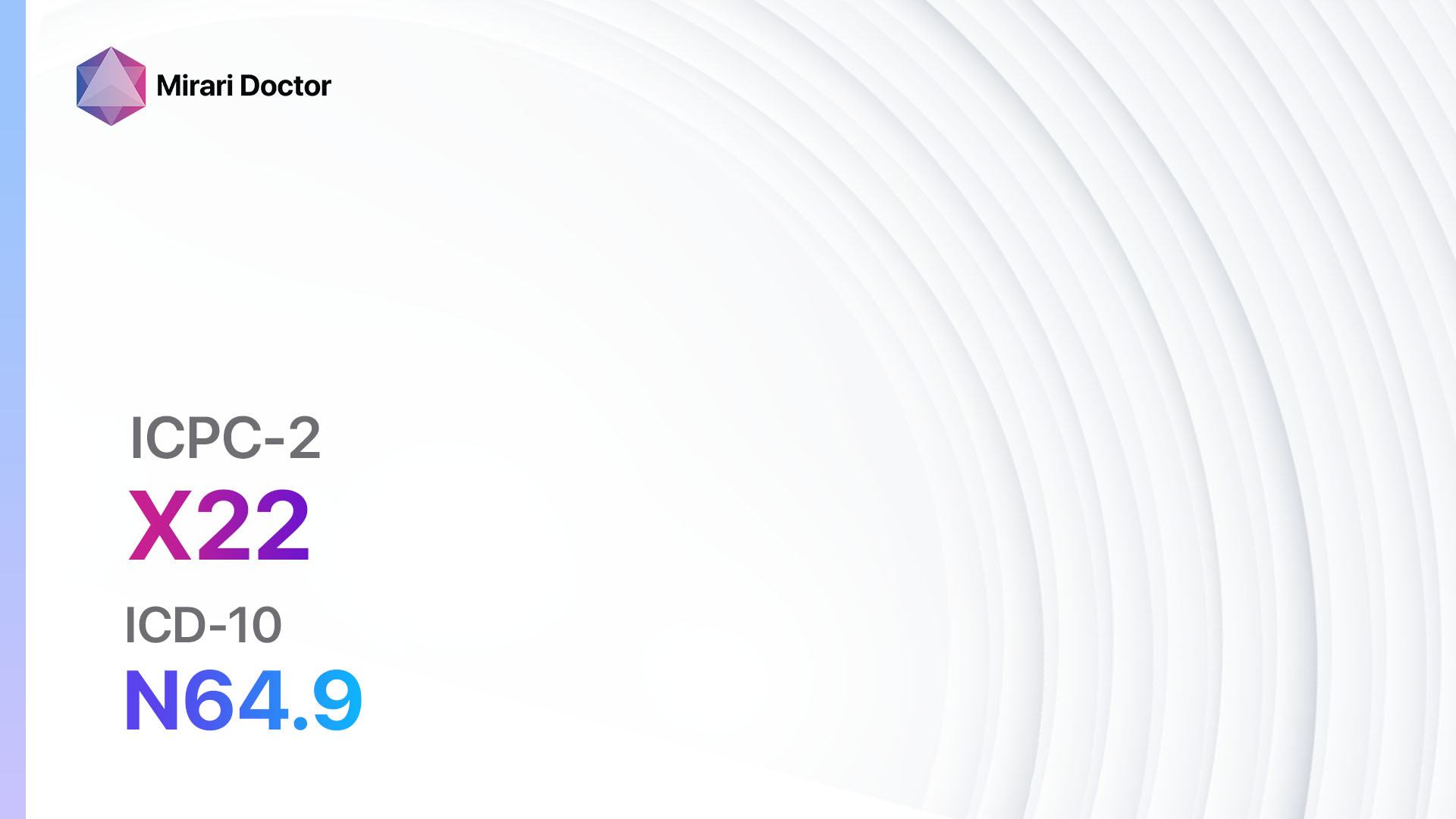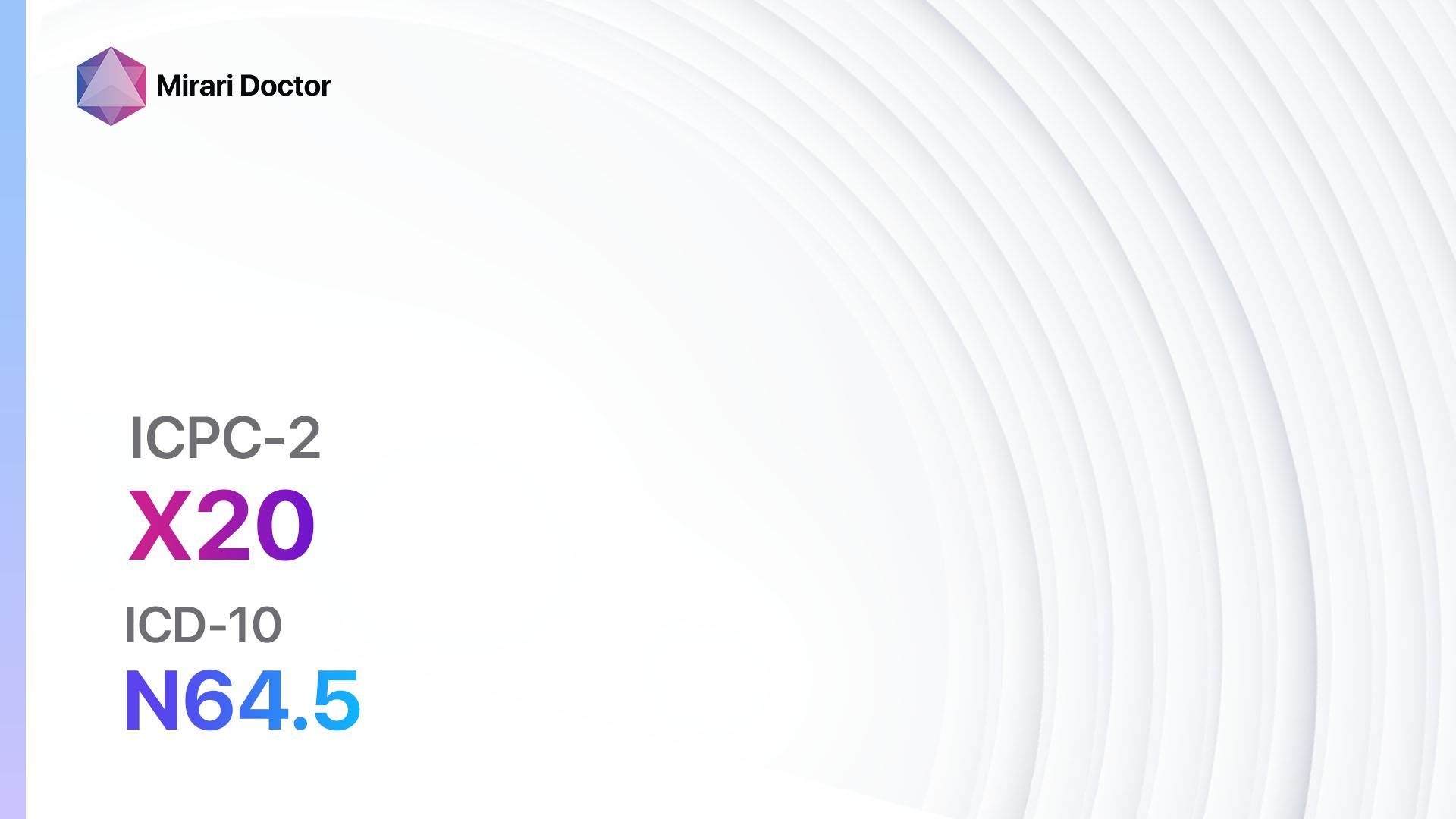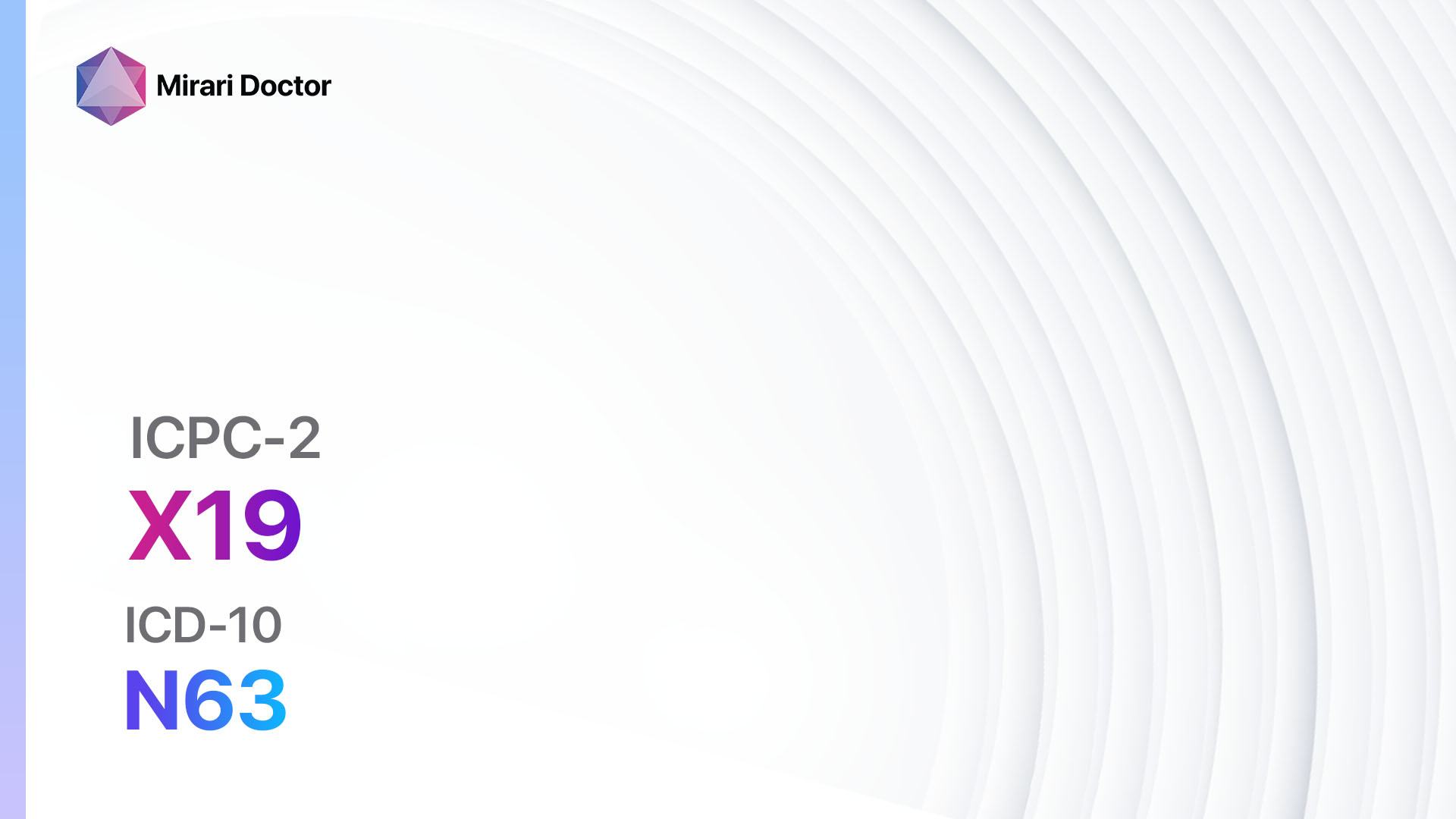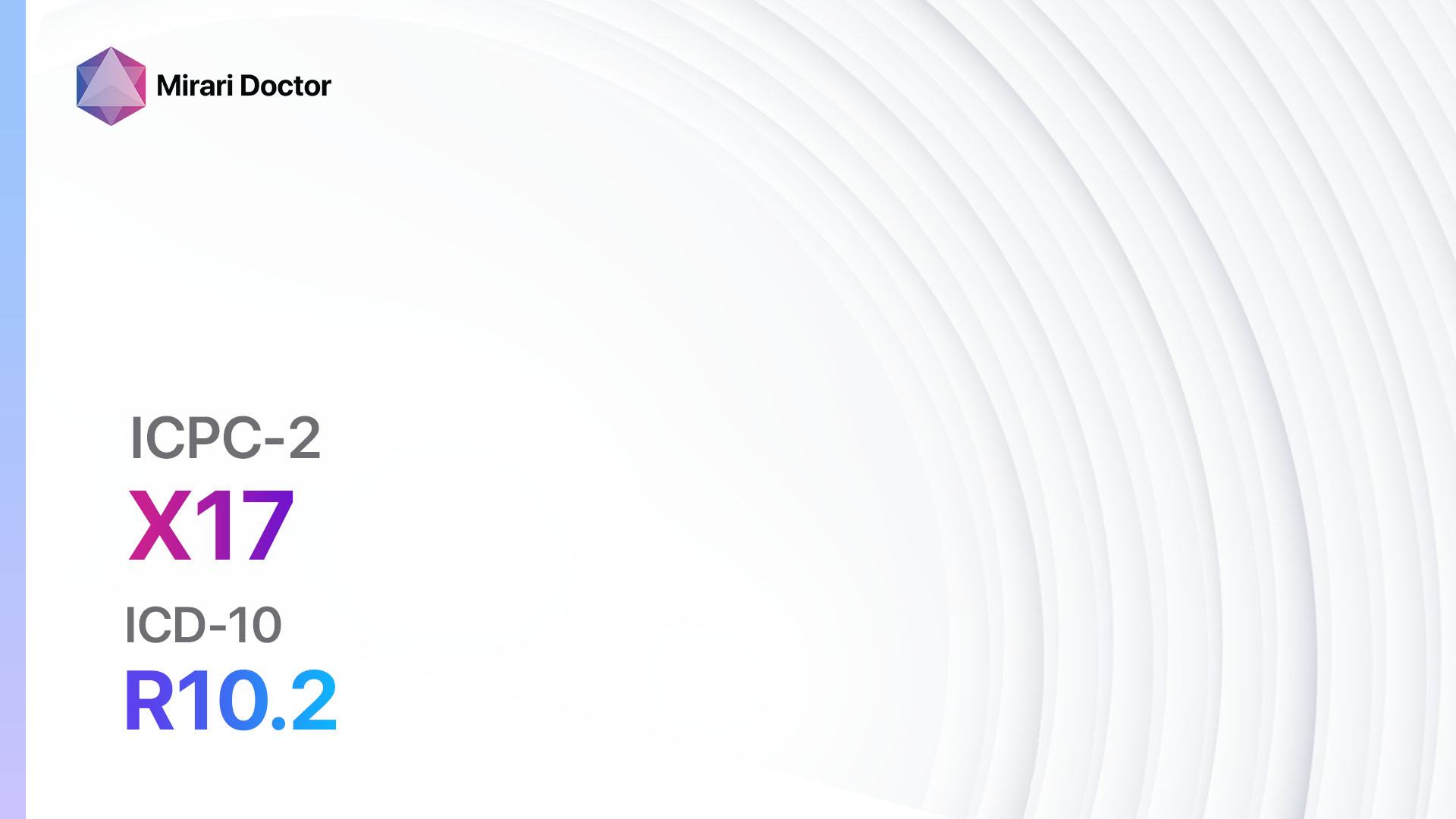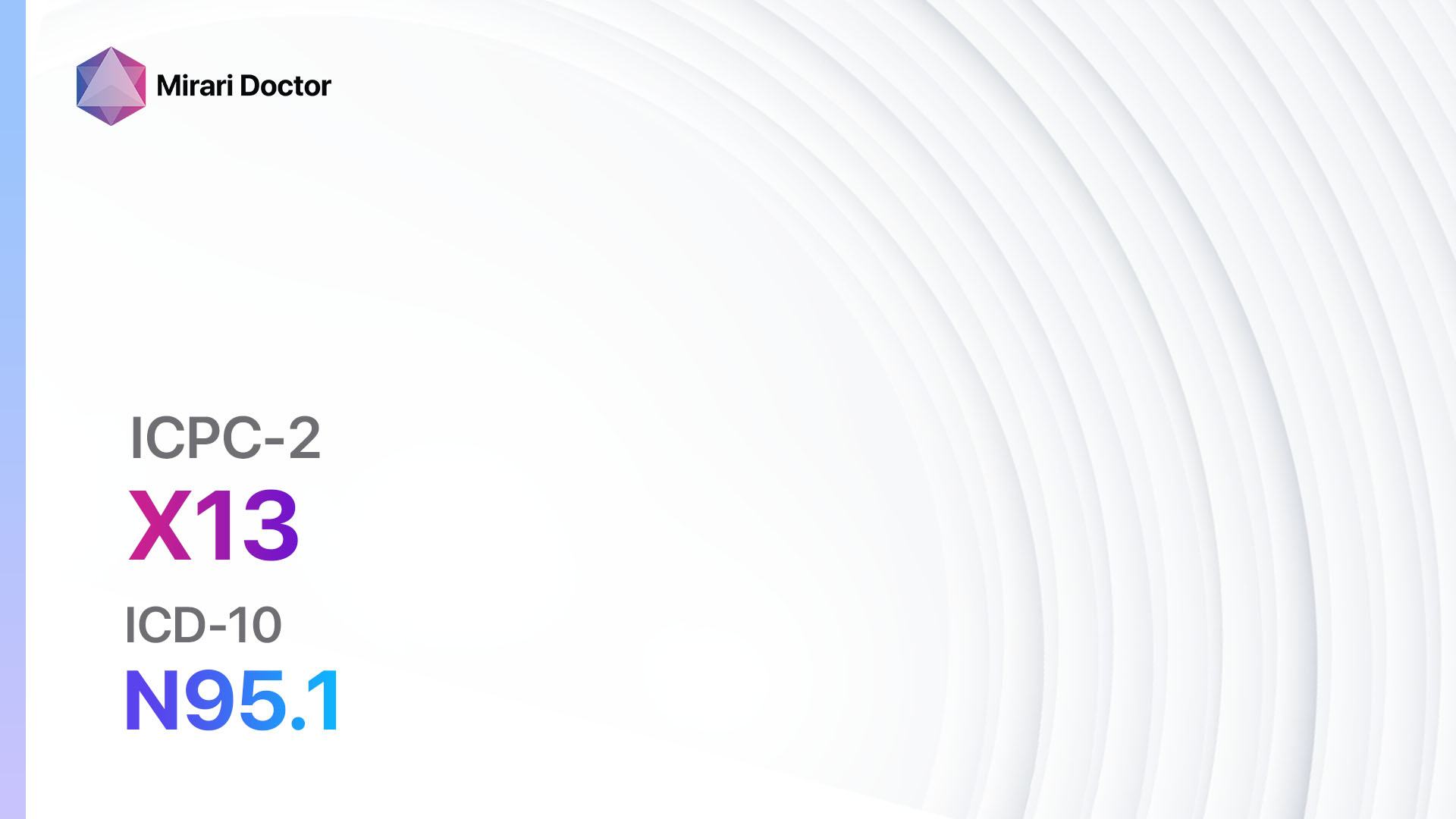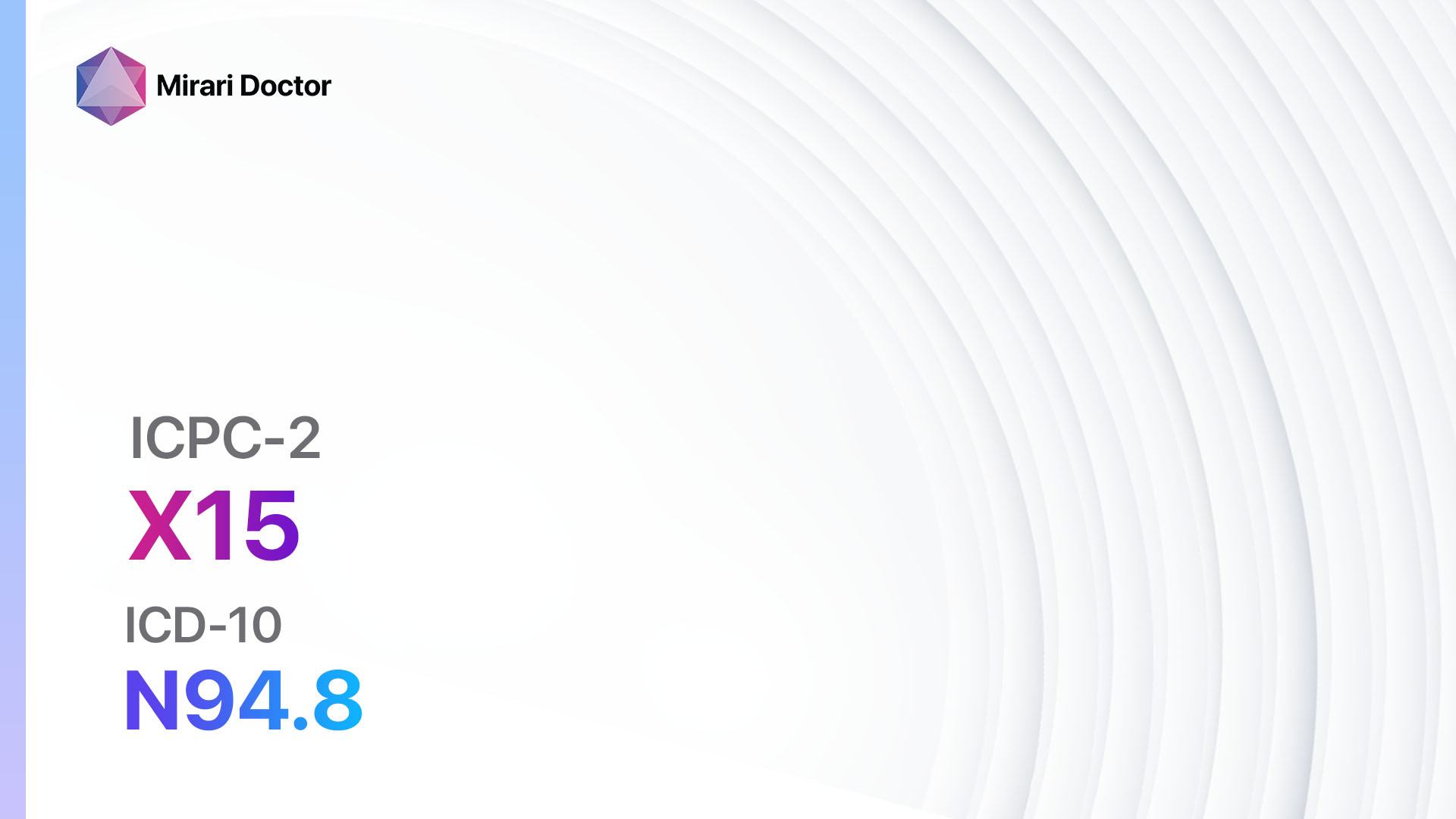
Introduction
Vaginal symptoms or complaints can be caused by various factors and may indicate an underlying condition that requires medical attention[1]. This guide aims to provide an overview of the symptoms, causes, diagnostic steps, possible interventions, and lifestyle interventions for vaginal symptom/complaint other (ICPC-2: X15).
Codes
- ICPC-2 Code: X15 Vaginal symptom/complaint other
- ICD-10 Code: N94.8 Other specified conditions associated with female genital organs and menstrual cycle
Symptoms
- Vaginal itching: Persistent itching or irritation in the vaginal area.
- Vaginal discharge: Abnormal discharge that may be thick, white, yellow, or green in color.
- Vaginal odor: Unusual or foul-smelling odor coming from the vagina.
- Vaginal dryness: Lack of moisture or lubrication in the vaginal area.
- Vaginal pain or discomfort: Pain or discomfort during sexual intercourse or urination[2].
Causes
- Yeast infection: Overgrowth of the fungus Candida in the vagina[3].
- Bacterial vaginosis: Imbalance of bacteria in the vagina[4].
- Sexually transmitted infections (STIs): Infections such as chlamydia, gonorrhea, or trichomoniasis.
- Menopause: Decreased estrogen levels leading to vaginal dryness and thinning of the vaginal walls[5].
- Allergic reactions: Allergies to certain products such as soaps, detergents, or latex.
- Irritation or injury: Irritation or injury to the vaginal area due to friction, tampon use, or douching.
Diagnostic Steps
Medical History
- Gather information about the patient’s symptoms, including the duration, severity, and any associated factors.
- Ask about any previous vaginal infections or STIs.
- Inquire about the use of any vaginal products or medications.
- Assess the patient’s sexual history and practices.
- Evaluate the patient’s medical history, including any chronic conditions or medications that may contribute to vaginal symptoms[6].
Physical Examination
- Perform a visual examination of the external genitalia to check for any abnormalities, such as redness, swelling, or lesions.
- Use a speculum to examine the vaginal walls and cervix for signs of infection or inflammation.
- Collect a sample of vaginal discharge for laboratory testing, if necessary.
- Palpate the pelvic area to check for any tenderness or masses[7].
Laboratory Tests
- Vaginal swab: A sample of vaginal discharge may be collected and examined under a microscope to identify the presence of yeast, bacteria, or STIs.
- Pap smear: A sample of cells from the cervix may be collected to screen for cervical cancer or other abnormalities.
- STI testing: Depending on the patient’s sexual history and symptoms, tests for chlamydia, gonorrhea, and other STIs may be performed[8].
Diagnostic Imaging
- In most cases, diagnostic imaging is not necessary for the evaluation of vaginal symptoms. However, in certain situations, imaging modalities such as ultrasound or MRI may be used to assess the pelvic organs for any structural abnormalities or masses[9].
Other Tests
- Biopsy: If there are any suspicious lesions or growths in the vaginal area, a biopsy may be performed to determine if they are cancerous or benign.
- Hormone levels: In postmenopausal women, blood tests may be done to assess hormone levels, such as estrogen, to evaluate for hormonal imbalances[10].
Follow-up and Patient Education
- Schedule a follow-up appointment to discuss the results of the diagnostic tests and determine the appropriate treatment plan.
- Provide patient education on proper vaginal hygiene, including avoiding douching, using mild soaps, and wearing breathable underwear.
- Discuss safe sex practices and the importance of regular STI screenings.
- Address any concerns or questions the patient may have regarding their vaginal symptoms or treatment options.
Possible Interventions
Traditional Interventions
Medications:
Top 5 drugs for vaginal symptom/complaint other:
- Antifungal medications (e.g., Fluconazole, Clotrimazole):
- Cost: Generic versions can be $3-$20 for a single dose.
- Contraindications: Hypersensitivity to the medication.
- Side effects: Nausea, headache, abdominal pain.
- Severe side effects: Severe allergic reactions.
- Drug interactions: Warfarin, certain anticonvulsants.
- Warning: Avoid alcohol during treatment.
- Antibiotics (e.g., Metronidazole, Clindamycin):
- Cost: Generic versions can be $5-$20 for a course of treatment.
- Contraindications: Hypersensitivity to the medication.
- Side effects: Nausea, metallic taste in the mouth.
- Severe side effects: Severe allergic reactions.
- Drug interactions: Alcohol, certain blood thinners.
- Warning: Avoid alcohol during treatment.
- Topical estrogen creams (e.g., Estradiol):
- Cost: Generic versions can be $20-$50 for a tube.
- Contraindications: History of estrogen-dependent cancer.
- Side effects: Local irritation, breast tenderness.
- Severe side effects: Increased risk of blood clots.
- Drug interactions: None reported.
- Warning: Regular breast examinations recommended.
- Antihistamines (e.g., Diphenhydramine, Loratadine):
- Cost: Generic versions can be $3-$10 for a pack.
- Contraindications: Hypersensitivity to the medication.
- Side effects: Drowsiness, dry mouth.
- Severe side effects: None reported.
- Drug interactions: Sedatives, alcohol.
- Warning: May cause drowsiness.
- Corticosteroids (e.g., Hydrocortisone):
- Cost: Generic versions can be $5-$15 for a tube.
- Contraindications: Hypersensitivity to the medication.
- Side effects: Local skin thinning, burning sensation.
- Severe side effects: None reported.
- Drug interactions: None reported.
- Warning: Avoid use on open wounds.
Alternative Drugs:
- Probiotics: May help restore the natural balance of bacteria in the vagina.
- Vaginal moisturizers: Can provide relief from vaginal dryness and discomfort.
- Antiviral medications: Used to treat viral infections such as herpes.
Surgical Procedures:
- In most cases, surgical procedures are not necessary for the treatment of vaginal symptom/complaint other. However, in rare cases where there is a structural abnormality or persistent symptoms that do not respond to conservative treatments, surgical intervention may be considered. The specific procedure will depend on the underlying cause and should be discussed with a gynecologist or specialist.
Alternative Interventions
- Probiotics: Taking oral or vaginal probiotics may help restore the natural balance of bacteria in the vagina. Cost: $10-$30 per month.
- Tea tree oil: Applying diluted tea tree oil to the affected area may help relieve itching and discomfort. Cost: $5-$10 per bottle.
- Yogurt: Applying plain, unsweetened yogurt to the vagina may help restore the natural pH balance. Cost: $3-$5 per container.
- Sitz baths: Soaking the genital area in warm water with added salts or herbs may provide relief from itching and inflammation. Cost: $10-$20 for a sitz bath kit.
- Aloe vera gel: Applying aloe vera gel to the affected area may help soothe irritation and promote healing. Cost: $5-$10 per bottle.
Lifestyle Interventions
- Avoid irritants: Use mild, unscented soaps and avoid douching or using harsh feminine hygiene products. Cost: Varies depending on the specific products.
- Wear breathable underwear: Choose cotton underwear and avoid tight-fitting clothing to allow for proper airflow. Cost: Varies depending on the brand and style.
- Practice safe sex: Use condoms to reduce the risk of STIs and avoid exposure to potential allergens. Cost: Varies depending on the brand and type of condoms.
- Maintain good hygiene: Keep the vaginal area clean and dry, and wipe from front to back after using the toilet. Cost: Varies depending on personal hygiene products.
- Manage stress: Stress can contribute to vaginal symptoms, so practicing stress-reducing techniques such as meditation or exercise may be beneficial. Cost: Varies depending on the chosen stress management activities.
It is important to note that the cost ranges provided are approximate and may vary depending on the location and availability of the interventions.
Mirari Cold Plasma Alternative Intervention
Understanding Mirari Cold Plasma
- Safe and Non-Invasive Treatment: Mirari Cold Plasma is a safe and non-invasive treatment option for various skin conditions. It does not require incisions, minimizing the risk of scarring, bleeding, or tissue damage.
- Efficient Extraction of Foreign Bodies: Mirari Cold Plasma facilitates the removal of foreign bodies from the skin by degrading and dissociating organic matter, allowing easier access and extraction.
- Pain Reduction and Comfort: Mirari Cold Plasma has a local analgesic effect, providing pain relief during the treatment, making it more comfortable for the patient.
- Reduced Risk of Infection: Mirari Cold Plasma has antimicrobial properties, effectively killing bacteria and reducing the risk of infection.
- Accelerated Healing and Minimal Scarring: Mirari Cold Plasma stimulates wound healing and tissue regeneration, reducing healing time and minimizing the formation of scars.
Mirari Cold Plasma Prescription
Video instructions for using Mirari Cold Plasma Device – X15 Vaginal symptom/complaint other (ICD-10:N94.8)
| Mild | Moderate | Severe |
| Mode setting: 1 (Infection) Location: 0 (Localized) Morning: 15 minutes, Evening: 15 minutes |
Mode setting: 1 (Infection) Location: 0 (Localized) Morning: 30 minutes, Lunch: 30 minutes, Evening: 30 minutes |
Mode setting: 1 (Infection) Location: 0 (Localized) Morning: 30 minutes, Lunch: 30 minutes, Evening: 30 minutes |
| Mode setting: 2 (Wound Healing) Location: 0 (Localized) Morning: 15 minutes, Evening: 15 minutes |
Mode setting: 2 (Wound Healing) Location: 0 (Localized) Morning: 30 minutes, Lunch: 30 minutes, Evening: 30 minutes |
Mode setting: 2 (Wound Healing) Location: 0 (Localized) Morning: 30 minutes, Lunch: 30 minutes, Evening: 30 minutes |
| Mode setting: 7 (Immunotherapy) Location: 1 (Sacrum) Morning: 15 minutes, Evening: 15 minutes |
Mode setting: 7 (Immunotherapy) Location: 1 (Sacrum) Morning: 30 minutes, Lunch: 30 minutes, Evening: 30 minutes |
Mode setting: 7 (Immunotherapy) Location: 1 (Sacrum) Morning: 30 minutes, Lunch: 30 minutes, Evening: 30 minutes |
| Mode setting: 7 (Immunotherapy) Location: 1 (Sacrum) Morning: 15 minutes, Evening: 15 minutes |
Mode setting: 7 (Immunotherapy) Location: 1 (Sacrum) Morning: 30 minutes, Lunch: 30 minutes, Evening: 30 minutes |
Mode setting: 7 (Immunotherapy) Location: 1 (Sacrum) Morning: 30 minutes, Lunch: 30 minutes, Evening: 30 minutes |
| Total Morning: 60 minutes approx. $10 USD, Evening: 60 minutes approx. $10 USD |
Total Morning: 120 minutes approx. $20 USD, Lunch: 120 minutes approx. $20 USD, Evening: 120 minutes approx. $20 USD, |
Total Morning: 120 minutes approx. $20 USD, Lunch: 120 minutes approx. $20 USD, Evening: 120 minutes approx. $20 USD, |
| Usual treatment for 7-60 days approx. $140 USD – $1200 USD | Usual treatment for 6-8 weeks approx. $2,520 USD – $3,360 USD |
Usual treatment for 3-6 months approx. $5,400 USD – $10,800 USD
|
 |
|
Use the Mirari Cold Plasma device to treat Vaginal symptom/complaint other effectively.
WARNING: MIRARI COLD PLASMA IS DESIGNED FOR THE HUMAN BODY WITHOUT ANY ARTIFICIAL OR THIRD PARTY PRODUCTS. USE OF OTHER PRODUCTS IN COMBINATION WITH MIRARI COLD PLASMA MAY CAUSE UNPREDICTABLE EFFECTS, HARM OR INJURY. PLEASE CONSULT A MEDICAL PROFESSIONAL BEFORE COMBINING ANY OTHER PRODUCTS WITH USE OF MIRARI.
Step 1: Cleanse the Skin
- Start by cleaning the affected area of the skin with a gentle cleanser or mild soap and water. Gently pat the area dry with a clean towel.
Step 2: Prepare the Mirari Cold Plasma device
- Ensure that the Mirari Cold Plasma device is fully charged or has fresh batteries as per the manufacturer’s instructions. Make sure the device is clean and in good working condition.
- Switch on the Mirari device using the power button or by following the specific instructions provided with the device.
- Some Mirari devices may have adjustable settings for intensity or treatment duration. Follow the manufacturer’s instructions to select the appropriate settings based on your needs and the recommended guidelines.
Step 3: Apply the Device
- Place the Mirari device in direct contact with the affected area of the skin. Gently glide or hold the device over the skin surface, ensuring even coverage of the area experiencing.
- Slowly move the Mirari device in a circular motion or follow a specific pattern as indicated in the user manual. This helps ensure thorough treatment coverage.
Step 4: Monitor and Assess:
- Keep track of your progress and evaluate the effectiveness of the Mirari device in managing your Vaginal symptom/complaint other. If you have any concerns or notice any adverse reactions, consult with your health care professional.
Note
This guide is for informational purposes only and should not replace the advice of a medical professional. Always consult with your healthcare provider or a qualified medical professional for personal advice, diagnosis, or treatment. Do not solely rely on the information presented here for decisions about your health. Use of this information is at your own risk. The authors of this guide, nor any associated entities or platforms, are not responsible for any potential adverse effects or outcomes based on the content.
Mirari Cold Plasma System Disclaimer
- Purpose: The Mirari Cold Plasma System is a Class 2 medical device designed for use by trained healthcare professionals. It is registered for use in Thailand and Vietnam. It is not intended for use outside of these locations.
- Informational Use: The content and information provided with the device are for educational and informational purposes only. They are not a substitute for professional medical advice or care.
- Variable Outcomes: While the device is approved for specific uses, individual outcomes can differ. We do not assert or guarantee specific medical outcomes.
- Consultation: Prior to utilizing the device or making decisions based on its content, it is essential to consult with a Certified Mirari Tele-Therapist and your medical healthcare provider regarding specific protocols.
- Liability: By using this device, users are acknowledging and accepting all potential risks. Neither the manufacturer nor the distributor will be held accountable for any adverse reactions, injuries, or damages stemming from its use.
- Geographical Availability: This device has received approval for designated purposes by the Thai and Vietnam FDA. As of now, outside of Thailand and Vietnam, the Mirari Cold Plasma System is not available for purchase or use.
References
- Paladine, H. L., & Desai, U. A. (2018). Vaginitis: Diagnosis and Treatment. American Family Physician, 97(5).
- Mayo Clinic. (2021). Vaginal discharge. Retrieved from https://www.mayoclinic.org/symptoms/vaginal-discharge/basics/definition/sym-20050825
- Centers for Disease Control and Prevention. (2021). Vulvovaginal Candidiasis. Retrieved from https://www.cdc.gov/std/treatment-guidelines/candidiasis.htm
- Centers for Disease Control and Prevention. (2021). Bacterial Vaginosis – CDC Fact Sheet. Retrieved from https://www.cdc.gov/std/bv/stdfact-bacterial-vaginosis.htm
- Mayo Clinic. (2021). Vaginal atrophy. Retrieved from https://www.mayoclinic.org/diseases-conditions/vaginal-atrophy/symptoms-causes/syc-20352288
- American College of Obstetricians and Gynecologists. (2020). Vaginitis in Nonpregnant Patients. Practice Bulletin No. 215. Obstetrics & Gynecology, 135(1), e1-e17.
- Sim, M., Logan, S., & Goh, L. H. (2020). Vaginal discharge: evaluation and management in primary care. Singapore Medical Journal, 61(6), 297-301.
- Centers for Disease Control and Prevention. (2021). Vulvovaginal – STI Treatment Guidelines. Retrieved from https://www.cdc.gov/std/treatment-guidelines/vaginal-discharge.htm
- American College of Obstetricians and Gynecologists. (2018). ACOG Committee Opinion No. 734: The Role of Transvaginal Ultrasonography in Evaluating the Endometrium of Women With Postmenopausal Bleeding. Obstetrics & Gynecology, 131(5), e124-e129.
- Nwankwo, T. O., Aniebue, U. U., & Umeh, U. A. (2017). Syndromic Diagnosis in Evaluation of Women with Symptoms of Vaginitis. Current infectious disease reports, 19(1), 3.
Related articles
Made in USA


